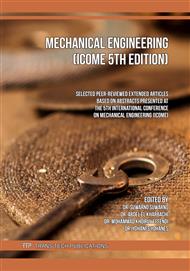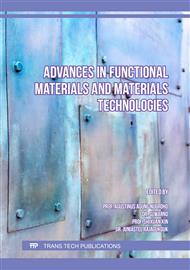p.65
p.73
p.83
p.89
p.95
p.101
p.107
p.115
p.121
The Orientation and High-Quality Effect of Deposit Layer to Surface Roughness on FDM 3D Printed Part
Abstract:
In 3rd revolution industry, additive manufacturing has a role in term manufacturing process for creating a part. Additive manufacturing has popular name that is called 3D printing technology. The surface quality of 3D printed part is still observed and developed. So, the purpose of research is to know the surface quality of 3D printed part to different layer height and orientation of deposit layer in Polylactic Acid material (PLA). The experimental test involved a 3D printer machine to build square 3D printed part. Furthermore, the quality surface of specimen is measured by using SurftestSJ-301 Mitutoyo device. The layer height of the test specimen is varied from 0.05 mm to 0.15 mm with the increment of 0.5 mm for each specimen. The layer angle of deposit material is also varied from 45o to 90o with the increment of 15o for each variation. Base on the observation and analyzation, the highest roughness is on the Lh 0.15 mm (11.79 ) with 45o of layer angle of deposit material, whereas the lowest roughness on the Lh 0.05 mm (0.98 ) with 90o of layer angle of deposit material.
Info:
Periodical:
Pages:
95-99
Citation:
Online since:
January 2023
Keywords:
Price:
Сopyright:
© 2023 Trans Tech Publications Ltd. All Rights Reserved
Share:
Citation:



